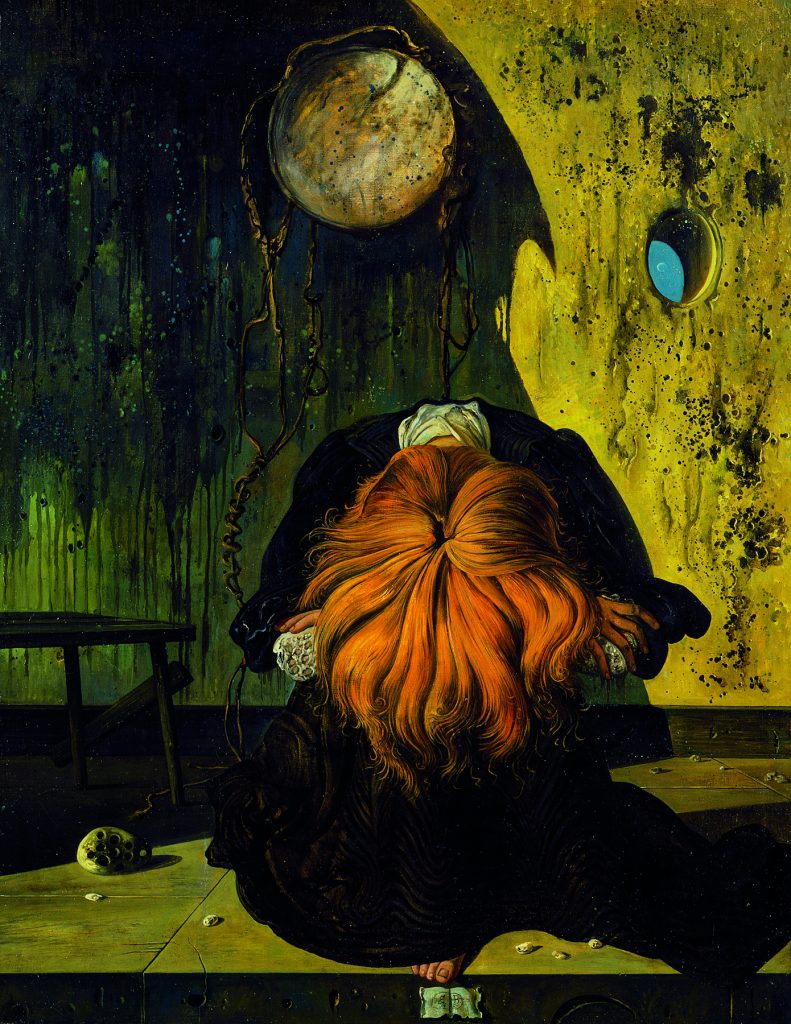Sunset (Medusa) (work of art)
Artwork Info
About
Eugene Berman rejected modernism’s faith in progress and the future. Instead, he drew inspiration from classical antiquity, painting strange and melancholy reveries on time and the transience of life. Beginning in the 1940s, he painted a series of enigmatic women, each solitary against a backdrop of decay. Often the figures stand or sit with their backs to the viewer, or crouch with their faces hidden, as in Sunset (Medusa). In each painting the woman is visually and emotionally remote. Berman’s sense of drama derived from his work as a celebrated theatrical designer.
In Sunset (Medusa) the female figure, clothed in velvet and lace, kneels grandly on a shallow stage before a ruined wall—an ominous setting for this eerie and uncertain drama. The heightened clarity of the image as much as the trompe l’oeil monogram at the bottom edge suggest Northern Renaissance art, specifically that of the German master Albrecht Dürer. According to Emily Genauer, writing in Art Digest in 1949, Berman explained that the “curious, spattered, almost mouldy surface” of his paintings symbolized “all the bullet-holes with which the world’s walls have been peppered during [World War II], as well as our whole moral and spiritual degeneration.” The beauty of the writhing locks of Berman’s Medusa, modeled by the film actress Ona Munson (later Berman’s wife), suggests a comic, Freudian interpretation of the snake-haired Gorgon of Greek mythology, whose horrific features turned men to stone.
tags: conflict, meaning, reflection, mythology

